As the predecessor to the world-famous Jeep Wrangler, the Jeep CJ series blends both form and function beautifully. The CJ5, made from 1955 to 1984, was the Jeep that made the company a household name in the civilian market while the slightly larger CJ7 laid most of the groundwork for the first-generation Wrangler.
And while the better vehicle is almost entirely subjective, comparing the two legendary Jeeps provides a bit of fun and history mixed into one.
And it’s also a great way to help you make a decision if you’re in the market for one of these “Civilian Jeeps.” So if you’ve ever wanted to pit the two Jeeps in a battle royale, here it is: the Jeep CJ5 vs. the CJ7.
TL;DR: Jeep CJ5 vs CJ7

Jeep CJ5
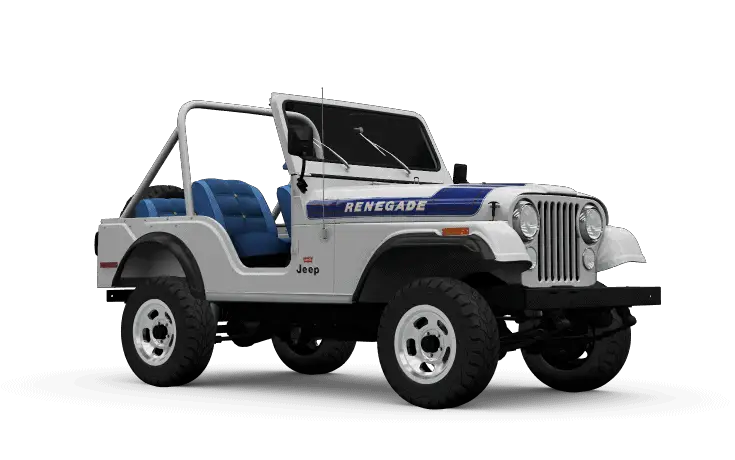
Jeep CJ7
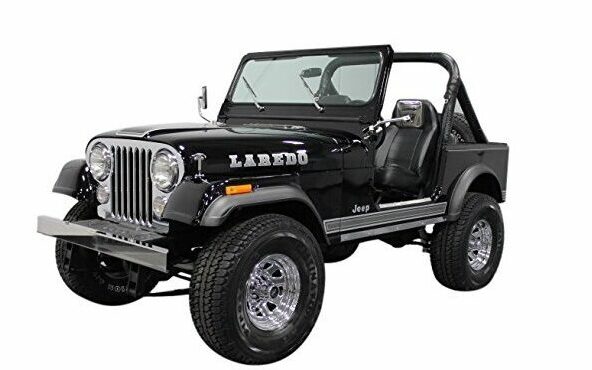
Pros
Jeep CJ5
Vintage looks
Excellent off-road handling
Jeep CJ7
More trim choices
Less prone to rust
Offers an automatic transmission
Larger size to accommodate passengers and cargo more easily
Cons
Jeep CJ5
Prone to rusting
Poor handling on pavement
Bare bones with few features
No automatic transmission choice
Jeep CJ7
More expensive option
Best For
Jeep CJ5
A true Jeep collector that knows the value of a vintage machine, yet still wants to tackle the off-road with a formidable machine
Jeep CJ7
Drivers that want some extra amenities on their Jeep without giving up the ability to off-road; also ideal for everyday driving
Jeep CJ5 History
The CJ5, at least in its civilian format, wasn’t sent to dealerships until 1964. Prior to that, it was exclusively a military vehicle. But little changed when it was finally available to the public. With a simple two-door, open-air design and an elongated front end, it was unlike any other vehicle produced.
However, in true Jeep fashion, it was a tough and rugged machine, making it the ideal choice for farmers and ranchers across the country. It also had a removable top, making it perfect for cruising the beach or going on a summer road trip, although this was much less of a selling point early in the brand’s history.
The first incarnations of the Jeep CJ5 employed either a 3.7-liter V6 that produced 155 horsepower or a four-cylinder engine that provided a mere 75 ponies. During this time, the CJ5 manufacturer Kaiser ramped up production around the globe, expanding its manufacturing operations into 30 countries and making the CJ5 available in 150 countries.
By the early 1980s, the CJ5 started to lose favor with Americans, specifically due to lobbying from the Insurance Institute for Highway Safety, which essentially billed the car as a deathtrap due to its lack of any safety features outside of seat belts. Today, the CJ5 remains a collector’s car and one of the greatest inventions in American automotive history.
Jeep CJ7 History
Although production of the CJ5 didn’t stop until 1983, the CJ7 hit American roadways in 1976, giving drivers a larger, more powerful option to the CJ5. Part of this transition was the fact that Kaiser Jeep was purchased by AMC (American Motors Corporation) in 1970. In tune with auto manufacturing at the time, nearly every American car grew in size. The CJ7 was no different.
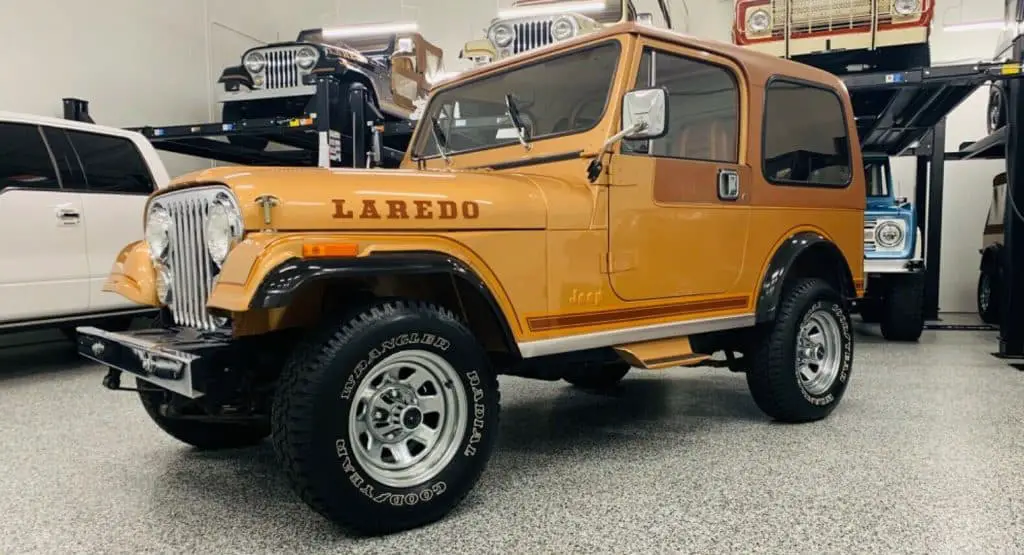
However, a wheelbase that grew by 10 inches and a larger body weren’t the only differences the CJ7 had over the CJ5. The CJ7 also added a standard part-time two-speed transfer case, the choice of either an automatic or manual transmission, an all-wheel-drive system, and a molded hard top. In addition, brawnier engines (both a V-6 and a V-8 with more power were added to the lineup. Two high-end trims — the Laredo and the Renegade — whose names are still a part of the Jeep lineup — also made the CJ7 appeal to more drivers courtesy of leather bucket seats, a tilted steering wheel, and even a chrome package.
Despite decent sales numbers, Jeep discontinued the CJ7 in 1986 to make way for the first generation of the Jeep Wrangler. This marked the end of the CJ series — a brand that started in World War II and continued over the next 40 years. Like the CJ5, the CJ7 is a highly coveted vehicle and one that still showcases many of the styling and driving cues that exist on the Jeep Wrangler today.
Relevant Characteristics Between Jeep CJ5 and CJ7
In a side-by-side comparison, you can easily compare and contrast the different yet relevant characteristics of the Jeep CJ5 and CJ7. Here is a quick breakdown of the most important specs of each specs of each model.
Jeep CJ5 vs CJ7
Compare by tapping or clicking below!

Production Years
Jeep CJ5
1955 to 1984
Jeep CJ7
1976 to 1986
Typical Used Cost
Jeep CJ5
$15,000 with a range of $5,000 to $35,000
Jeep CJ7
$20,000 with a range of $7,500 to $40,000
Engine(s)
Jeep CJ5
2.5-liter I-4
3.7-liter V-6
3.8-liter V-6
4.2-liter V-6
5.0-liter V-8
3.1-liter I-4 diesel
Jeep CJ7
2.5-liter I-4
3.8-liter V-6
4.2-liter V-6
5.0-liter V-6
2.4-liter I-4 diesel (manufactured by Isuzu)
Transmission(s)
Jeep CJ5
Three-speed manual
Four-speed manual
Jeep CJ7
Three-speed manual
Four-speed manual
Five-speed manual
Three-speed automatic
MPG
Jeep CJ5
5 to 18 MPG with an average typically around 13 MPG
Jeep CJ7
7 to 21 MPG with an average typically around 13 to 14 MPG
Suspension Type
Jeep CJ5
Leaf Spring
Jeep CJ7
Leaf Spring
Similarities and Differences
Despite the overlap between the production of the Jeep CJ5 and CJ7, both vehicles have striking differences, as well as a number of similarities. To better position yourself to make a purchase, understanding these differences, including which one is perceptibly better than the other, can help you make an informed decision on which one you decide to purchase. Here are some of the similarities and differences between the two.
Jeep CJ5 and CJ7 Differences
The differences between the Jeep CJ5 and CJ7 may not be perceptible to the average buyer, but digging a bit deeper and using the chart above can reveal some major distinctions. One of the most striking differences is the availability of an automatic transmission in the CJ7. While Jeep purists may argue that a true Jeep is always manual, newer drivers often struggle with a manual transmission. Thus, the CJ7’s automatic transmission can take the guesswork out of the drive and allow you to cruise in a relatively unobstructed and more mindless fashion.
Although not listed above, the CJ5 also has a much shorter wheelbase. This allows for tight turns compared to the CJ7, which might be important to such drivers. However, the CJ5 is a notoriously rough on-road vehicle compared to the CJ7, simply because of its roots in military off-roading and because the CJ7 was marketed more toward everyday drivers as opposed to farmers and ranchers.
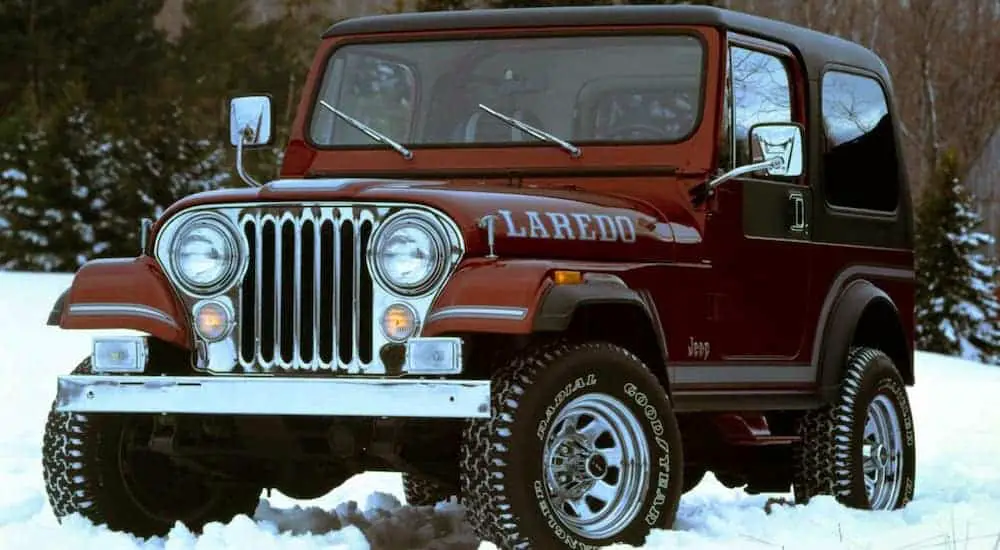
In addition, the CJ7 offers more space for storage and passengers, as well as larger U-shaped doors compared to the S-shape of the CJ5. This doesn’t necessarily make the CJ7 the better choice; it’s a matter of preference who you want to chauffeur around or how much room you need for cargo.
Another of the most noticeable features is that the CJ7 is much larger than the CJ5. The CJ7 has a length of 173 inches and a height of 70 inches compared to 142 inches in length and 66 inches in height of the CJ5. Oddly, the CJ5 is three inches wider than the CJ7 (68 inches to 65 inches), yet the CJ7 is typically classified as the more comfortable vehicle thanks to better legroom and headroom for both front and rear passengers.
Lastly, the CJ5 is notorious for rusting through, not entirely because of its age, but simply because the body is more prone to rust over time. The CJ7 may still rust, but it’s more impervious to corrosion; it’s also easier to replace the frame/tub of the CJ7 as more of these vehicles are in existence compared to the CJ5.
Jeep CJ5 and CJ7 Similarities
Although the Jeep CJ5 and CJ7 may seem like two different vehicles when you read about the features above, they also have a number of similarities that clearly make them siblings.
Perhaps the most obvious is the availability of different engines. Over the life of each vehicle, the only true differences were in the diesel options available, with the CJ5 employing a Perkins diesel engine and the CJ7 getting its diesel propulsion from a joint venture from AMC and Isuzu. Though the official power numbers (torque and horsepower) may differ slightly, they’re essentially the same engine.
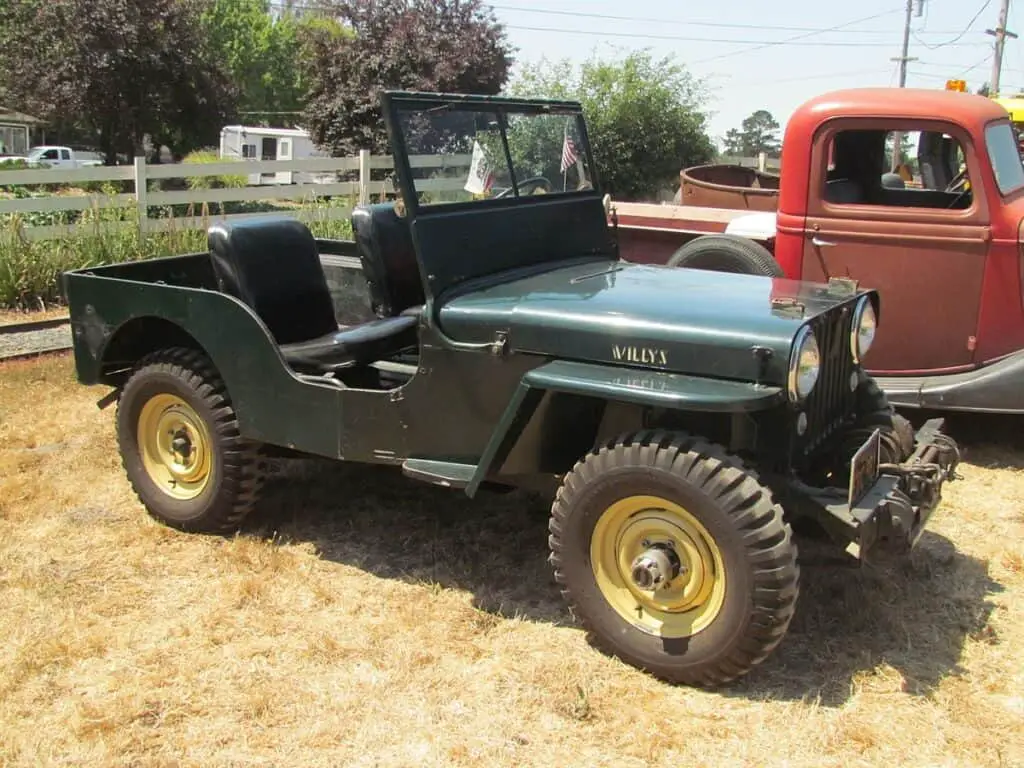
Another similarity between these two famous Jeeps is their use of leaf spring suspensions. These suspensions are a very basic predecessor to modern suspension systems, using layers of steel placed one on top of the other. Formed into an elliptical shape, these leaf springs can flex depending on the terrain and then return to their original shape and location once the terrain is less treacherous. If you’re an off-roader, a leaf spring suspension provides excellent support, though it’s not up to some of the standards you’ll find on the modern Jeep Wrangler.
Why Choose a Jeep CJ5
While the CJ7 is the more modern offering, the CJ5 has a certain charm to it, as well as benefits that may appeal to your tastes. Here are some of the reasons you should choose a CJ5 over its successor.
Classic Looks
The CJ7 looks similar to the Wrangler YJ, which doesn’t sully its looks entirely. But for a more classic Jeep look that has that vintage appeal, the CJ5 wins hands down. It has all the styling cues of a military Jeep, yet without the camo paint job, it looks slick no matter where you’re driving.
Off-Roading Capability
Ask any CJ5 owner, and they’ll tell you that the CJ5 isn’t exactly designed for everyday driving, yet therein lies the charm. With a tighter wheelbase and a smaller overall size, the CJ5 can traverse almost any type of terrain without any problem. The CJ7 is no slouch off the beaten path, but in a straight-up off-road test, chances are the CJ5 would emerge as the king of the off-road.

Price and Budget
In the collector’s market, intuition would tell you that the older vehicle usually fetches the higher price, yet this isn’t always the case between the CJ5 and the CJ7. Because the CJ7 is more road-friendly, it’s often more marketable to drivers and collectors. As a result, you can usually find the CJ5 for a modest price. That can translate into a bargain buy, especially if you have the know-how and patience to fix one up.
Why Choose a Jeep CJ7
Despite the vintage charm of the CJ5, its rough-around-the-edges approach may not appeal to all types of Jeep enthusiasts. As such, the CJ7 might be the better option. But if you’re still stuck between the two, here are some reasons why you should lean toward the CJ7.
Space and Size
Although an additional nine inches in length doesn’t seem like much in terms of a vehicle, you’ll notice the massive increase in space and comfort as soon as you hop into the CJ7. Even if you’re a modest height, the extra space in the driver’s seat translates into lengthier drives without having to pull over to stretch. Furthermore, the CJ7 sports a larger cargo area, making it ideal for road trips or heading to the beach. Getting into the CJ7 is also much easier than with a CJ5, as it has larger door frames and wider door jambs, allowing bigger individuals to enter and exit without a problem.
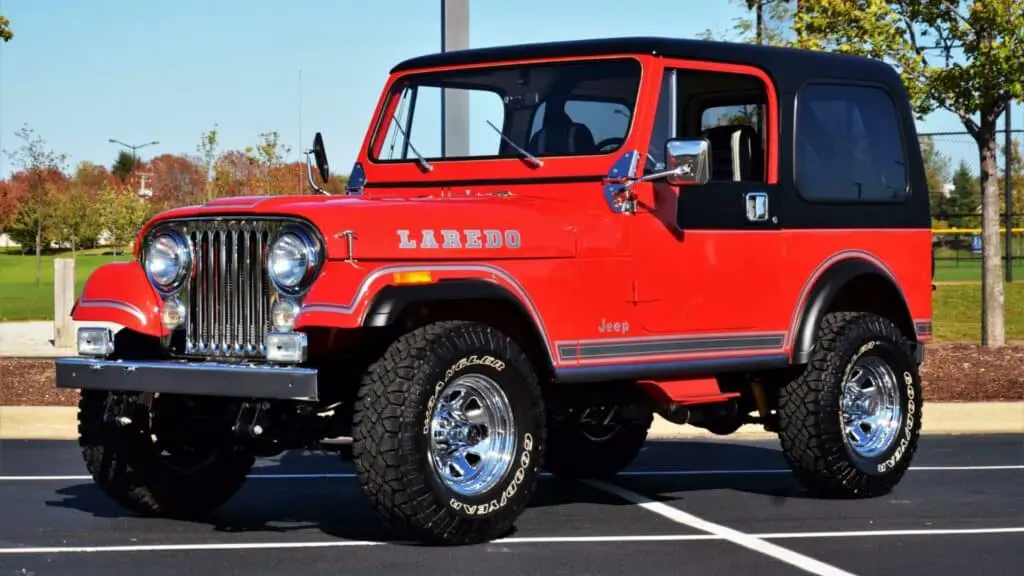
The Finer Details
The CJ5 isn’t about luxury; it’s about getting around. But if you’re a fan of the finer things in life, the CJ7 might be the better choice. One of the more outstanding features is the addition of air conditioning, which can be a lifesaver if you’re off-roading in hot conditions or you live in a warmer climate.
The CJ7 also has a number of trims that introduce leather seating, a tachometer, tow hooks, chrome bumpers, a soft or hard top, and a tilt steering wheel. For the sake of comfort, the CJ7 is the standout victor.
Maintenance and Availability
Due to issues with rust, the number of CJ5s on the road seems to decrease every year. However, the CJ7 has the benefit of longevity. Not only does it rust less than the CJ5, but it’s also easier to find parts, as many aftermarket versions are still manufactured, as well as the interchangeable nature of some parts between the CJ7 and the first-generation Wrangler YJ.
Bottom Line
The CJ5 isn’t better than the CJ7 or vice-versa. It’s all about what you want in a Jeep. If you’re searching for a bare bones option with cool looks and the ability to traverse any type of terrain, the CJ5 is the better choice. But if you want more options, the ability to customize, and easier maintenance, the CJ7 should get the job done. The only regret should be that you didn’t buy one of these wonderful machines sooner.
Who Worked on This?

Brian
Editor
A master of organization, Brian helps keep everything running smoothly for Your Jeep Guide.
No Jeep yet but we’re working on that!

Cory
Writer
Cory loves his XJ and frequently thrashes it through the hills. He’s constantly fixing something.
“What fenders?”
Check Us Out!
